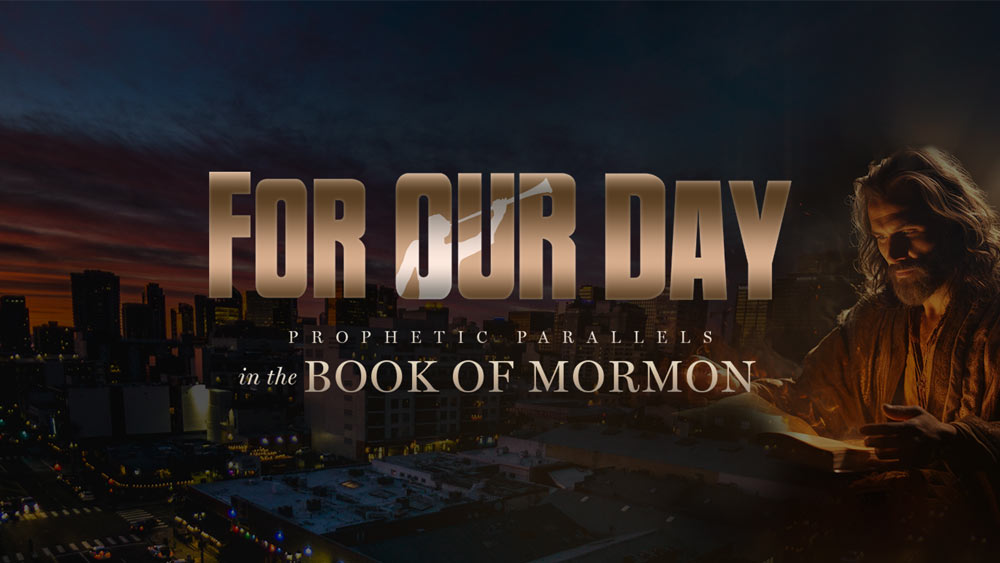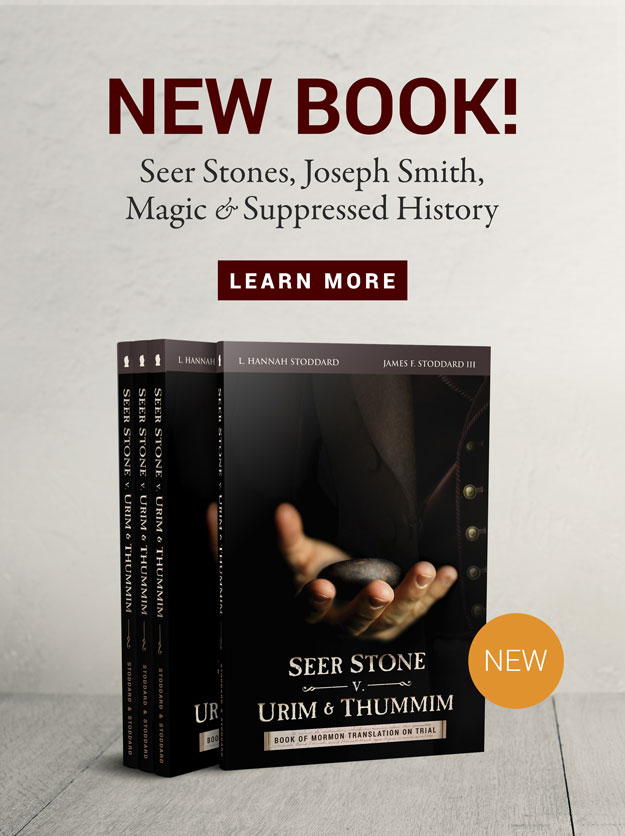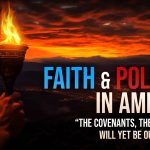The Scriptural Basis for the Heartland Model
Many proposed Book of Mormon geography theories were originated using a method proposed by Dr. John Sorenson and others who taught that the first step was to create a hypothetical or “internal” map using the 500+ geography related passages. This has lead to more than 150 different proposed geographies. The book was not written for its geography, but for its prophecies. Can we learn more about its geography through its prophecies than we can by speculating using hypothetical maps? Following is a brief synopsis of the scriptural basis for the Heartland Model geography of the Book of Mormon.
How Many Promised Lands Are There, When Were They Established, And Where Are They Located?
The first recorded instance in scripture of a “land of promise” is a land called Cainan, named after a great-grandson of Father Adam (PGP Moses 6:17). Three years prior to his death, Adam called his righteous posterity together, including Cainan, and gave them his last blessing in the valley of Adam-ondi-Ahman (D&C 107:53). Thus, the original or pre-flood “land of promise” was a land near what is today the state of Missouri, USA (D&C 116:1).
Following Noah’s flood God gave Abraham a land known as Canaan (Gen. 13:14-15, Abraham 2:18-19), which is present day Israel (see map), for his posterity, together with a covenant that as long as his children would keep His commandments, they would be blessed with posterity (seed), security (protection) and prosperity (economic) Gen. 13:14-16, D&C 132:30, 1 Kings 2:3, 1 Chron. 22:13. This covenant, according to Abraham, “came down from the fathers…before the foundation of the earth” (Abraham 1:2-3) and was provided by God for the purpose that His covenant people, whilst they lived on their covenant promised lands, could be a blessing to “all the nations of the earth” (Gen. 22:18).
These two covenant lands, one New World and one Old World, would be provided with the necessities for their success and would be located conducive to the fulfillment of this responsibility. Just as ancient Israel was situated amidst the civilizations of Egypt, Babylon, Assyria and Persia, yet remained among the later civilizations of Rome and Greece at the time of Christ, so too the New World covenant land would be provided with all things necessary for its success. It would also be situated to best take advantage of its location to bless other nations and peoples, to become a shining beacon of hope and light and bring the gospel of Jesus Christ to the world as had ancient Israel. These two lands were covenanted and promised by God for the inheritance of His covenant people throughout the history of mankind and these same two promised lands are designated as the final gathering place for God’s chosen people, Israel. They are, namely, Jerusalem and the New Jerusalem. Both of these physical locations are known through history and through revelation respectively, and are not speculative (D&C 84:1-4).
The Book of Mormon is Consistent With Recorded Old Testament History
According to Christ’s recorded words to the Nephites in the Book of Mormon, there are only two covenant lands of promise for the house of Israel; Jerusalem (3 Nephi 20:29) and New Jerusalem (3 Nephi 20:22). It is known by revelation that the location where the New Jerusalem will be built is currently the state of Missouri, USA (D&C 84:1-4). Missouri is also the location of the ancient land of Cainan, the original “land of promise.” The scriptures have been consistent throughout time because these covenant lands of promise were established before the foundations of the world.
2 Nephi 1:5 speaks directly of a “land of promise” that is “choice above all other lands” that the “Lord God hath covenanted with me should be a land for the inheritance of my seed. Yea, the Lord hath covenanted this land unto me and to my children forever.” Christ reiterates His commitment to Lehi’s posterity as He again proclaims, “And behold, this is the land of your inheritance; and the Father hath given it unto you.” (3 Nephi 15:13)
Prior to Lehi’s arrival, the Jaredites, another people led to the promised land by the Lord, record that “this land” the land their civilization occupied, is reserved for the “remnant of the house of Joseph” and that this same land will be the location of the “Holy City,” the New Jerusalem of the latter days (Ether 13:8). Ether confirms that after the waters of Noah’s flood receded off the face of this land, it became a “choice land above all other lands, a chosen land of the Lord” and then affirms that “it was the place of the New Jerusalem…” Moroni, the narrator of the record of Ether, then proclaims that “Ether saw the days of Christ, and he [Christ] spake concerning a New Jerusalem upon this land” (Ether 13:2-4). Therefore, the lands of the Jaredites were, according to Christ, on the same lands as those of the New Jerusalem of the latter days. Ether also reiterates that the knowledge of the Father’s covenant with the house of Israel, that has been “hid up from the foundation of the world,” will be remembered (Ether 4:14-15).
What Was the “Covenant” Spoken Of?
Both of these covenant lands were established before the foundations of the world. The covenant was initiated by Adam in the Garden of Eden on the American land of promise (Moses 5:11-12). It was invoked anew in the Mediterranean region by Noah and Abraham (Gen. 6:18, 8:20, 9:9, Abraham 1:2-3, Ether 13:10-11). Those brought by the Lord back to His land of promise in the America’s re-invoked the covenant upon the people through their prophet leaders, the brother of Jared of the Jaredites (Ether 2:7-12, 15), and Lehi, father of the Nephites and Lamanites (2 Nephi 1:5-9).
Covenant Requirements and Promises
The Lord‘s only requirement, in order to receive all the promised blessings of posterity, security and prosperity associated with the covenant, is simply to obey his commandments. Any society or people who will live by these rules of conduct provided by the Lord cannot help but enjoy these blessings since their people would not be bearing false witness, they would be honoring their fathers and mothers, refraining from stealing, not committing adultery or coveting another’s possessions and so on. Nephi records that “if it so be that they shall serve him according to the commandments which he hath give, it shall be a land of liberty unto them; wherefore, they shall never be brought down into captivity (security); if so, it shall be because of iniquity” (2 Nephi 1:7) Lehi “obtained a promise” that as long as his people would keep His commandments they “shall prosper upon the face of this land: and they shall be kept from all other nations” and have the land for themselves. If they will but keep those commandments they “shall be blessed upon the face of this land” and no one will molest or be given power to take away their covenanted lands and “they shall dwell safely forever.” (2 Nephi 1:9)
Breaching of the Covenant, Judgments of God and Subsequent Re-Invoking of the Covenant
Each time that the singular requirement, obeying the commandments, is ignored by the people, the Lord allows breaches in their security, then their prosperity, and finally the taking away of their posterity, usually through war. This is done in a merciful effort to turn their hearts and minds back to Him; to cause them to repent and ask for His protection and guidance. Each time the covenant is ignored and the judgments of God fall upon the people, in order for the covenant to be reinstated, the people and their leaders must re-invoke the covenant. Such has been the case with prophets throughout Old Testament history as well as those who were directed to the American promised land. The Book of Mormon provides multiple examples of such re-invocations such as Limhi (Mosiah 21:32) Lachoneus (3 Nephi 3:12-25) and Captain Moroni (Alma 46:10-13).
Only Two Promised Covenant Lands
Thus, there are only two “Promised Lands” mentioned by Christ in the Book of Mormon; Jerusalem of the Old World (3 Nephi 20:29) and New Jerusalem of the New World (3 Nephi 20:22). Both of these covenant lands of promise were given by the Lord to the house of Israel for their latter day gathering place. The New World Promised Land would be the location of the gathering place for the House of Israel in the America’s. Where is this gathering place? It will be at the New Jerusalem. And where is the New Jerusalem going to be located? We know through revelation that the New Jerusalem will be built in Jackson County Missouri, in the Heartland of North America (D&C 84:1-4). Did the Book of Mormon history take place on the same land as the New Jerusalem? Multiple passages establish that Lehi’s family was lead to and remained on this Promised Land throughout their entire history (1 Nephi 13:30, 22:7, 2 Nephi 1:5, 3 Nephi 20:22, 21:2-4, 21:22-23, Ether 13:2-6). Therefore the land the Nephites, Jaredites, Mulekites and Lamanites lived upon was their “covenanted” land of promise and must by covenant include the Heartland of North America because it is the revealed location of the New Jerusalem by the Lord Himself.
Promised Land Limitations
The Book of Mormon itself limits the Nephite “Promised Land” to a latter-day “nation” (1 Ne. 13:30) that would be “set up,” (3 Ne. 21:4) “lifted up,” (1 Ne. 13:30) “raise[d] up,” (1 Ne. 22:7) “established,” and “delivered by the power of God out of the hands of all other nations” (1 Ne. 13:19) in the latter days. Eight times the text refers to this particular nation as being a “land of liberty” (2 Ne. 1:7, 10:11, Mosiah 29:32, Alma 46:10, 16, 17, 3 Ne. 21:4, Ether 2:12), which would become a “mighty Gentile nation” (1 Ne. 22:7) “above all other nations” (3 Ne. 20:27). Being a “nation” is the scriptural limiting factor. It is not referencing an entire hemisphere or a particular nationality of people, but a new nation that would be among other nations. That it is speaking of this nation as a political entity is also clear because it states that this nation will be raised up within the population known as the Gentiles on the face of this land (1 Ne. 22:7) and it will have “no kings upon the land” and the Lord “will fortify this land against all other nations” (2 Ne. 10:10-12) such that it would be “delivered by the power of God out of the hands of all other nations” in order to establish a “land of liberty” upon the land.
America’s Founding Father, George Washington and President Abraham Lincoln Invoke the Covenant
These prophecies are clearly making reference to the establishment of the United States of America on what was then the Nephite land of promise. This is the only nation wherein the Lord raised up men “for the very purpose” of its establishment (D&C 101:80) so that the gospel could be restored again to the earth as so many ancient (3 Ne. 21:22) and latter-day prophets have prophesied and testified (D&C 10:53). Amazingly the Founding Fathers of the united States understood that they were establishing a new Israel, that they were also of the covenant people of the Lord, and thus the American Covenant, as it is now being called, was invoked by the nation’s first president as his first official act. George Washington’s inaugural address was the re-invocation of the covenant on the land and people of America. Following the breach caused by the sin of slavery and the ensuing Civil War, President Abraham Lincoln again invoked the American Covenant in his second inaugural speech which was given shortly after the end of the war.The Lord Himself stated that the New Jerusalem, which we know by revelation will be built in Missouri, USA, would be built on these same lands (3 Ne. 20:22, Ether 13:2-6, D&C 57:1-3). These lands are the sacred sites of events throughout history and prophecy, from the Garden of Eden and the restoration, to the New Jerusalem and Adam-ondi-Ahman. These are all New World sacred sites, and all of them are located within what is now the nation of the United States of America.
Summary
The discussion above, because it is entirely scriptural prophecy based, is undeniable. This is simply a very robust scripture chain and it does not promote any one theory, but scripturally indicates that the promised land of the Nephites is the same land as where the future New Jerusalem will be built, which has been absolutely established through revelation to be in what is known as the “Heartland” of North America. Therefore the Book of Mormon lands had to have been located here. Would Christ’s statement make any sense when he said that “this people (the Gentiles) will I establish on this land (the land of the Nephites) and it (this land) will be a New Jerusalem (3 Nephi 20:22), if those lands were located in Japan, Russia or Central or South America? No, simply because it has been revealed that the New Jerusalem will be built in North America and will never be on those lands, therefore those lands cannot have been the primary lands of the Book of Mormon.








2 Responses
I think this is the first time I have seen a major LDS site actually point out the New Jerusalem connection. My Mom and I have been discussing that for years. Ether clearly refers to the land that the Nephties would inherit as the New Jerusalem. It’s made clear in other places as well. Now I am not a stringy person who thinks it all HAD TO HAPPEN within the current borders of the United States, but the basic location I feel is made pretty clear.
Well done article, thanks for this!